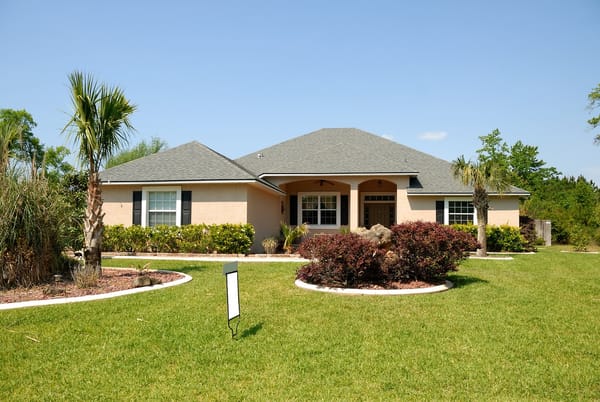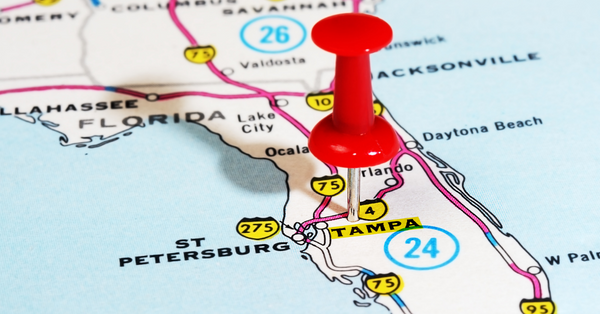When searching for a home in Florida, you may come across the term "Community Development District," or CDD. This unique form of local governance impacts your homeownership costs through something called CDD fees. But what exactly is a Community Development District, and how do CDD fees affect you? Let's dive in and discover more.
What is a CDD? Understanding Community Development Districts (CDDs)
A Community Development District (CDD) is a local, special-purpose government framework authorized by Florida's Uniform Community Development District Act of 1980. The CDD's primary purpose is to plan, finance, construct, operate, and maintain community-wide infrastructure in planned communities.
The CDD provides a mechanism for the financing and management of new communities, which allows a community to establish higher construction standards, simultaneously providing a long-term solution for the operation and maintenance of the community’s facilities.
How Are CDDs Formed?
A developer planning to build a new community will propose the creation of a CDD to the county or city in which the community will be located. This proposal includes a detailed plan for the community infrastructure and amenities. Once approved, the CDD can issue bonds to finance these developments.
The Role of CDD Fees
Now that we know what a CDD is, where do CDD fees come into play? CDD fees are essentially the homeowner's share of repaying the CDD's bonds. The costs of creating and maintaining a community's amenities and infrastructure are divided among the homeowners in the community, leading to the CDD fee each homeowner must pay.
These fees generally appear as non-ad valorem assessments on your annual property tax bill, and the amount varies based on the size and cost of the community's amenities and infrastructure. In essence, they are a form of long-term infrastructure financing that is paid by the community’s property owners.
CDD's vs HOA Fees
It's crucial to understand the difference between CDD fees and Homeowners Association (HOA) fees, as they both contribute to the overall cost of living in certain communities.
HOA fees are usually mandatory dues paid by homeowners within a particular community to cover the cost of maintaining common areas, such as landscaping, shared facilities like gyms and pools, and sometimes even certain utilities. These fees are often paid monthly to the HOA, which is typically a non-profit organization run by elected homeowners from within the community.
On the other hand, CDD fees are utilized to pay off the debt incurred from financing community infrastructure through bonds, as well as ongoing maintenance costs. CDD fees are usually included in your property tax bill and are paid annually.
The key distinction here is what these fees cover and how they are managed. HOA fees tend to cover the costs of amenities and shared spaces, and are directly managed by the community's residents. CDD fees, however, are specifically for the repayment of infrastructure costs and ongoing maintenance and are managed by the CDD, which can include board members who are not residents.
It's also worth noting that it's not uncommon to have both CDD and HOA fees in the same community. Therefore, it's essential to factor in both when considering the costs of living in a particular neighborhood or community.
Benefits and Drawbacks of CDD Fees
There are both advantages and disadvantages to living in a CDD community. On the plus side, CDD communities often have excellent amenities, such as pools, parks, and well-maintained roads. The CDD ensures that these amenities are kept in good condition over the long term.
On the downside, CDD fees add to your annual property tax bill and can make living in these communities more expensive. Additionally, CDD fees are typically not optional, meaning homeowners are legally required to pay them.
Are CDD Fees Worth It?
The answer to this question depends on your lifestyle and financial situation. If you value having access to high-quality amenities and well-maintained infrastructure, and are prepared for the additional cost, then living in a CDD community might be worth it for you. However, if you're budget-conscious and don't mind fewer or less luxurious amenities, you may want to consider non-CDD options.
Conclusion
Property taxes and community development district fees in Florida are essential components that homeowners should be well-informed about before making a purchase. While property taxes are generally familiar to most, CDD fees serve a unique purpose, allowing local governments to finance community infrastructure developments such as community pools, roads, and other amenities. Notably, while the annual CDD fees may appear as an additional financial burden, they are crucial for the upkeep and enhancement of community amenities.
The CDD Board, governed by the board of supervisors, collaborates with the local tax collector to ensure that these fees are collected seamlessly, often being integrated into the monthly mortgage payment. Homeowners should also be vigilant about the potential for CDD fees increase, stemming from the CDD Board's ability to issue tax-exempt bonds and fund extensive infrastructure development projects.
Understanding CDD fees in Florida is crucial for any potential homeowner. These fees represent an investment in your community's infrastructure and amenities. While they do increase your property tax bill, they also ensure that your community is maintained to high standards. Consider your lifestyle and financial situation carefully before deciding whether a CDD community is right for you.






